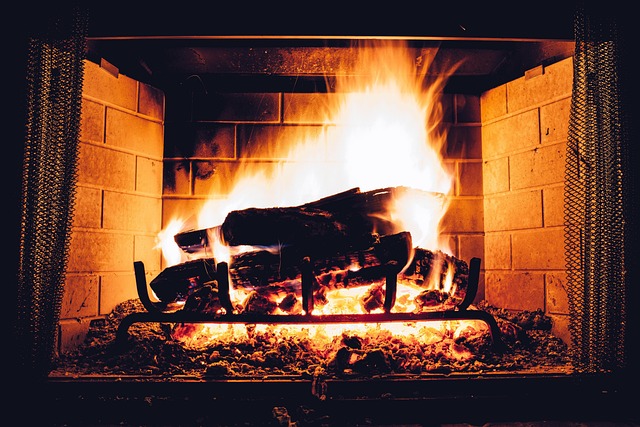Learn About The Charm Of Wood Stoves & Fireplaces
Wood stoves and fireplaces have been warming homes for centuries, offering both practical heating solutions and aesthetic appeal. These traditional heating methods continue to captivate homeowners with their ability to create cozy atmospheres while providing efficient warmth. Understanding the various options available can help you make informed decisions about incorporating these charming features into your home.

The timeless appeal of wood-burning heating systems extends far beyond their primary function of providing warmth. These heating solutions combine traditional craftsmanship with modern efficiency, creating focal points that enhance both the comfort and visual appeal of living spaces. From rustic cabins to contemporary homes, wood stoves and fireplaces adapt to various architectural styles while maintaining their distinctive character.
Introduction of Wood Stoves & Fireplaces
Wood stoves and fireplaces represent two distinct approaches to wood-burning heating systems. Traditional fireplaces feature open combustion chambers built into walls, creating dramatic focal points with visible flames and crackling sounds. Wood stoves, conversely, are freestanding units with enclosed combustion chambers that maximize heat output while minimizing heat loss. Both systems burn seasoned wood as their primary fuel source, but they differ significantly in efficiency, installation requirements, and heat distribution methods.
Modern wood-burning systems incorporate advanced combustion technologies that reduce emissions while increasing fuel efficiency. These improvements make contemporary wood stoves and fireplace inserts significantly more environmentally friendly than their predecessors. Secondary combustion chambers burn off gases and particles that would otherwise escape through the chimney, resulting in cleaner burning and more complete fuel utilization.
Different Types of Wood Stoves & Fireplaces
Wood stoves come in several configurations, each designed for specific heating needs and aesthetic preferences. Catalytic wood stoves use ceramic honeycomb catalysts to burn smoke and gases at lower temperatures, extending burn times and reducing emissions. Non-catalytic stoves rely on advanced firebox designs and secondary combustion chambers to achieve clean burning without catalytic components. Pellet stoves, while technically different, burn compressed wood pellets and offer automated feeding systems for convenient operation.
Fireplace options range from traditional masonry constructions to modern prefabricated units. Masonry fireplaces feature brick or stone construction with custom designs that integrate seamlessly into home architecture. Prefabricated fireplaces offer standardized dimensions and simplified installation processes. Fireplace inserts transform existing open fireplaces into efficient heating systems by installing sealed combustion chambers with glass doors and dedicated air supply systems.
Charm and Functionality & Home Benefits
The aesthetic appeal of wood-burning systems creates ambiance that electric or gas alternatives cannot replicate. Dancing flames, glowing embers, and the subtle sounds of burning wood contribute to relaxing environments that encourage gathering and conversation. These features make wood stoves and fireplaces popular choices for family rooms, living areas, and outdoor entertainment spaces.
Functional benefits extend beyond heating efficiency to include energy independence and emergency preparedness. Wood-burning systems operate without electricity, providing reliable heat during power outages. This independence from utility grids appeals to homeowners seeking self-sufficient heating solutions. Additionally, wood stoves can accommodate cooking surfaces, allowing for meal preparation during emergencies or recreational cooking experiences.
Home value improvements often result from well-designed wood-burning installations. Quality fireplaces and wood stoves serve as selling points that distinguish properties in competitive real estate markets. However, these benefits depend on proper installation, regular maintenance, and compliance with local building codes and environmental regulations.
Prices of Wood Stoves & Fireplaces
Wood stove pricing varies significantly based on size, efficiency ratings, and construction materials. Basic non-catalytic models typically range from $800 to $2,500, while high-efficiency catalytic units cost between $2,000 and $5,000. Premium models with advanced features and decorative elements can exceed $6,000. Installation costs add $1,500 to $4,000, depending on chimney requirements and local labor rates.
Fireplace costs depend heavily on construction type and complexity. Prefabricated units range from $1,500 to $4,000, plus installation costs of $2,000 to $5,000. Custom masonry fireplaces start around $3,500 for basic designs and can exceed $15,000 for elaborate stone or brick constructions. Fireplace inserts cost between $1,200 and $4,500, with installation adding $1,000 to $3,000.
| Product Type | Provider Examples | Cost Estimation |
|---|---|---|
| Basic Wood Stove | Englander, US Stove | $800 - $2,500 |
| High-Efficiency Stove | Vermont Castings, Jotul | $2,000 - $5,000 |
| Prefab Fireplace | Majestic, Superior | $1,500 - $4,000 |
| Masonry Fireplace | Local Contractors | $3,500 - $15,000+ |
| Fireplace Insert | Regency, Napoleon | $1,200 - $4,500 |
Prices, rates, or cost estimates mentioned in this article are based on the latest available information but may change over time. Independent research is advised before making financial decisions.
Operating costs include fuel, maintenance, and chimney cleaning expenses. Seasoned firewood costs vary by region but typically range from $200 to $400 per cord. Annual maintenance, including chimney cleaning and inspection, costs between $200 and $500. These ongoing expenses should be considered alongside initial purchase and installation costs when evaluating wood-burning heating systems.
Wood stoves and fireplaces continue to attract homeowners seeking authentic heating experiences that combine practical functionality with timeless charm. These systems offer unique benefits that modern heating alternatives cannot replicate, from emergency heating capabilities to the irreplaceable ambiance of natural wood fires. Careful consideration of costs, installation requirements, and maintenance needs ensures successful integration of these classic heating solutions into contemporary homes.




